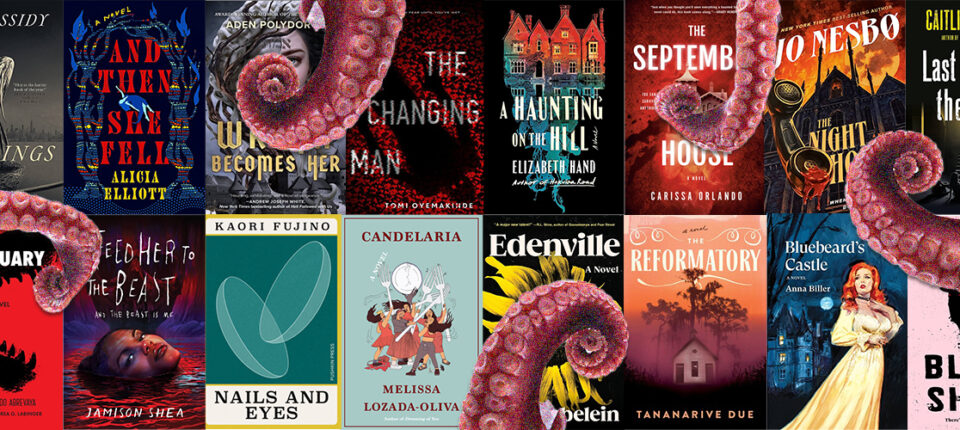The horror renaissance continues! And the second half of the year brings plenty of new standout titles to add to your TBR. The works below twist, shatter, and reinvent gothic and horror tropes, bringing old forms together with new issues, and do not attempt to separate the social from the personal when it comes to understanding fear and its bringers. There are gruesome body horrors, cackling dark comedies, surreal metaphorical structures, and (like earlier in the year) so many haunted houses. From old favorites, to new voices, teen slasher heroines to Eldritch-fighting grannies, here are 30 more horror books to look out for this year. Enjoy!

Ayesha Manazir Siddiqi, The Centre
(Gillian Flynn Books, July 11)
What would you do to be part of the most elite language academy ever established? And what would you be willing to keep secret? The Centre follows a struggling translator who learns of a place where people can go to become completely fluent in a new language in mere days of effort. She is determined to reap the rewards, but shocked when she begins to find out the dark secrets underpinning the secretive institution. A vicious and entertaining speculative satire of late-stage capitalism.

John Milas, The Militia House
(Henry Holt, July 11)
In this military horror novel, a rare but hopefully growing subgenre, American soldiers stationed near the ruins of an old Soviet outpost in Afghanistan find themselves in the midst of strange happenings, unexplained disappearances, and disturbing visitors. Milas is a wordsmith, and this novel is as haunting as it is impressive.
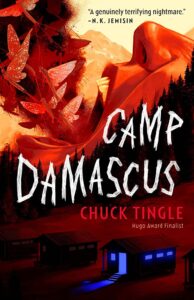
Chuck Tingle, Camp Damascus
(Tor Nightfire, July 18)
So, what if there was a Christian Conversion Camp that always worked…but only via performing some seriously dark magic? And what can a queer kid do to fight back? Chuck Tingle’s new novel, aside from having an awesome tagline (“They’ll scare you straight to hell.”), is a well-crafted and surprisingly moving novel. And certainly quite different from Chuck Tingle’s previous work…
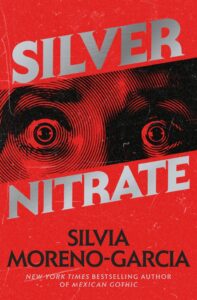
Silvia Moreno-Garcia, Silver Nitrate
(Random House, July 18)
Both of Silvia Moreno-Garcia’s parents worked in radio, so perhaps that’s part of the inspiration behind this bonkers ode to sound engineering and the (literal magical) power of the human voice. Silver Nitrate features a sound editor and a has-been actor as they befriend an elderly icon from the Golden Age of Mexican cinema, only to find themselves drawn into a vast conspiracy to harness the magic of the silver screen and bring an occult-obsessed Nazi back from the dead. This book has everything, and I could not recommend it enough!
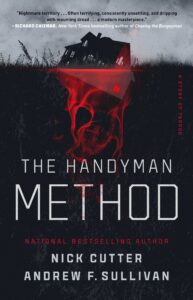
Nick Cutter, Andrew F. Sullivan, The Handyman Method : A Story of Terror
(Saga, August 8)
Surreal and disturbing, The Handyman Method is a diabolical tale of toxic masculinity gone awry, narrated by a set of youtube videos featuring an evil handyman. Cutter and Sullivan clearly had a lot of fun writing this together, and I’d declare it a collaborative triumph (as well as a hilarious send up of Home Depot guys. You know the ones).

Lauren Beukes, Bridge
(Mulholland, August 8)
There’s a lot of books out there already about husbands trying to save their wives via other dimensions, but this is the first time I’ve seen a daughter go into other worlds to find her mother. This isn’t just mind-bending scifi; it’s a thriller driven by a frenetic search for both love and answers. Beukes’ trademark balance between horror and thriller, with a focus on character, is on full display in Bridge. –MO
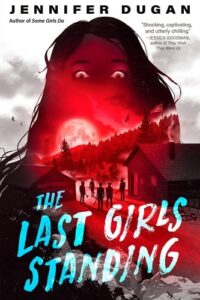
Jennifer Dugan, The Last Girls Standing
(Putnam, August 15)
Sloan and Cherry are the only two counselors to make it out alive from a brutal massacre at a summer camp, bonding in their fight for survival and embarking on a romance for the ages. But now Sloan is starting to wonder about if her girlfriend did more at that sleepaway camp than just survive. Campy, queer, and perfect for the doldrums of summer!

Keith Rosson, Fever House
(Random House, August 15)
What if Courtney Love and her son suddenly came into possession of a demonic severed hand that inspired violent thoughts in all who are near it? That’s the amazingly left-field set-up of Keith Rosson’s Fever House, which, in addition to the aging rocker and her son, features the viewpoints of two enforcers for a crime boss, two feds who work for a secretive government agency studying the occult, and government reports on the esoteric visions of the Angel Michael, held in captivity and slowly declining. The search for the severed hand has several folks on the musician’s trail, but she and her son are ready to get as badass as her lyrics in the 90s in order to defeat them.
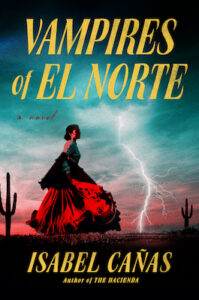
Isabel Cañas, Vampires of El Norte
(Berkley, August 15)
I loved Isabel Cañas’ lush, gothic debut, The Hacienda, and I’m psyched for her follow-up, set on the Texas-Mexico border during the 1840s, and featuring two childhood friends (and perhaps soon-to-be lovers) reunited in a battle against the undead.
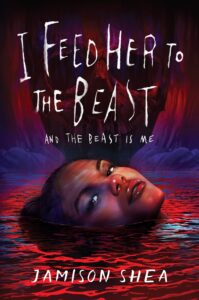
Jamison Shea, I Feed Her to the Beast and the Beast Is Me
(Henry Holt, August 29)
In this ballet horror novel, a young ballerina is given a chance at power after a star of the company takes her under her wing. But all power comes at a cost, and this power derives from an ancient source with its own agenda. I’m not sure what it is about dance that lends itself so well to horror—think Black Swan or Suspiria—but add this one to the list of stories that take the bloody feet and brutal precision of the dance world and turn them into visceral horror.
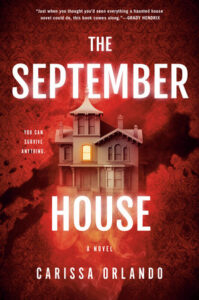
Carissa Orlando, The September House
(Berkley, September 5)
Carissa Orlando’s The September House uses hauntings as a brilliant metaphor for abuse, and what people can get used to, as well as a prescient comment on the tight housing market. Orlando’s narrator loves her home, and if she needs to ignore some ghostly children, be served tea by a taciturn housekeeper with a gaping face wound, and scrub the blood off the walls once a season, then so be it. Her husband isn’t so good at tolerating the house, but then, she’s learned how to tolerate much more from his treatment of her than she ever expected. When her daughter comes to stay, and her husband goes missing, it’s up to Orlando to continue saying “everything’s fine” for far too long. But the ghost in the basement may finally spur her to action…I found myself cheering at the end of this book, and I really hope it gets picked up as a Ryan Murphy production (post-writers’ strike, that is).

Lisa Springer, There’s No Way I’d Die First
(Delacorte Press, September 5)
Influencers! Halloween games! And a KILLER CLOWN!!!! There’s no way the narrator won’t make it to the end of this book, with all her Final Girl brilliance, which means there’s no way that you, the reader, will not also make it to the end of the very fun, very campy slasher novel. Springer’s heroine is trying to get attention for her horror film club and invites her prep school’s most influential students to an exclusive Halloween party at her parent’s mansion. Unfortunately, the party entertainment she’s hired has their own agenda, and it’ll take all her knowledge of horror tropes and household chemistry to outwit the clown’s righteous fury and grotesque gags.
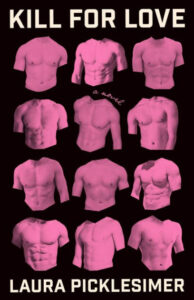
Laura Picklesimer, Kill For Love
(Unnamed Press, September 5)
The bored college fifth-year narrating Kill For Love has always been good at suppressing her appetites—you can see it in her carefully counted calories, svelte figure, and attempts to mask her sociopathy from her sisters. But when she kills a man in the act of coitus one night—then devours a meal of greasy meat for the first time in years—she realizes she’s found the one hunger impossible to ignore. Of particular note is how Picklesimer’s language reverses the male gaze as her killer objectifies the frat bros around her and tries to keep from mauling their drunken flesh.
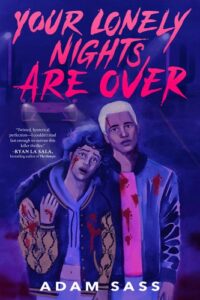
Adam Sass, Your Lonely Nights Are Over
(Viking Young Readers, September 5)
In this delightful YA homage to the slasher, a serial killer is targeting a school’s queer club, and two besties find themselves ostracized from the club after suspicion falls on them for the murders. They must clear their names, in between going to drive-in movies, settling scores, and occasionally hooking up. Will they solve the murders? Will they end up together? Do I even care who the murderer is when I’m desperate for these two to smash? Anyway, file this one under, Very Fun and Not at All Scary (at least, compared to other slashers).

Clay McLeod Chapman, What Kind of Mother
(Quirk, September 12)
I was shattered by Clay McLeod Chapman’s grief horror Ghost Eaters, and in What Kind of Mother, Chapman revisits some of the same themes of loss and absence, this time in the guise of a domestic thriller with supernatural overtones. A palm reader heads back to her hometown with her teenage daughter, only to reconnect with an old flame who is struggling with the loss of his young son. After reading his palm, Chapman’s heroine finds herself convinced her lover’s son is still alive. But where could he be, and who could have taken him?

Kaori Fujino, Nails and Eyes
Translated by Kendall Heitzman
(Pushkin Press, September 12)
I’m so looking forward to reading this literary Japanese horror that has earned comparisons to The Vegetarian and Tender is the Flesh (hint, hint). Narrated by a young girl with sinister intentions toward her stepmother, Nails and Eyes is a taught and entrancing novella, with additional disturbing stories rounding out the page count, all feeling very 90s-era Tartan video. The volume is part of a new series of Japanese short classics being issued by Pushkin Press, known on CrimeReads for their excellent Pushkin Vertigo series of classic detective fiction.

Rachel Harrison, Black Sheep
(Berkley, September 19)
It’s hard coming home to your estranged family to celebrate the wedding of your ex to your childhood best friend. It’s even harder when your family, your ex’s family, and your best friend are all part of an insular Satanist cult. And when Satan himself decides to show up at the celebration, well, that’s when all hell breaks loose (get it?). An excellent addition to the “weddings-gone-awry” genre, and just as funny as it is creepy.

Melissa Lozada-Oliva, Candelaria
(Astra House, September 19)
A badass Guatemalan grandma battles her way across a disaster-fallen city to find her granddaughters, fighting otherworldly creatures and strangely fixated on reaching the Watertown Mall Old Country Buffet. I can’t wait to read this bizarre, Lovecraftian take on disaster fiction.
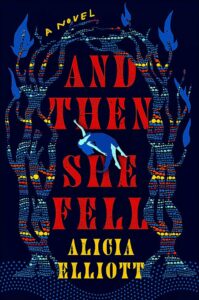
Alicia Elliott, And Then She Fell
(Dutton, September 26)
A young indigenous woman is going stir-crazy at home after giving birth, and her husband, a white professor of Native American studies, seems so supportive. But her husband keeps succeeding at her expense, the neighbors are beyond suspicious, her impostor syndrome is overwhelming, and it’s up to Elliott’s heroine to listen to the warnings of her ancestors and find the key to survival in the Haudenosaunee creation story. Creepy, thoughtful, and immersive!
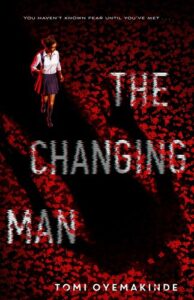
Tomi Oyemakinde, The Changing Man
(Feiwel & Friends, September 26)
Get Out meets Ace of Spades in this boarding-school horror. A young scholarship student at an elite academy notices some of her classmates of color have been exhibiting remarkable, and unnatural, changes in behavior. What does the school want? And what is it willing to take? An excellent horror thriller that you’ll speed through in less than a day.

Gustavo Eduardo Abrevaya, The Sanctuary
Translated by Andrea G. Labinger
(Schaffner Press, October 3)
In what reads as a David Lynch take on Red Harvest, a couple is on their way to a remote cabin when their car breaks down, stranding them in the middle of nowhere. In a quest to find assistance, they find themselves in a sinister village ruled by a despotic mayor, a fire-and-brimstone priest, an insidious, lewd, police squad, and more strange denizens. Soon, the wife goes missing. None of the townspeople are interested in finding her. And her husband must search far and wide for any allies…

Elizabeth Hand, A Haunting on the Hill
(Mulholland, October 3)
Elizabeth Hand is one of the coolest writers around, and I’m psyched to dive into A Haunting on the Hill, a Shirley-Jackson-estate approved continuation of The Haunting of Hill House (This time with more hauntings! And more hills! Actually probably just the one hill). Playwright Holly Sherwin and her girlfriend Nisa head upstate with a troupe of actors to stage and rehearse a new play. Sherwin is confident that the crumbling gothic manor of Hill House will bring out their creative sides, but instead, they are joined by their hauntings. I love a play-gone-wrong story and Hand’s promises to be one of the best.
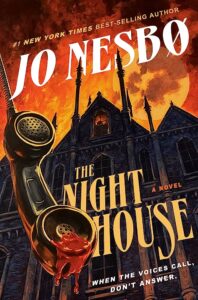
Jo Nesbø, The Night House
Translated by Neil Smith
(Knopf, October 3)
Jo Nesbo’s upcoming horror novel is a delightful contrast with the author’s usual work; in The Night House, classic horror tropes are reinvented as an unreliable narrator tries to block out terrible, knowing voices. One by one, his schoolmates begin to vanish, and he’s quickly pegged as the suspicious, angry outsider who must be behind the killings. Will he lose the girl he loves next? And is he, perhaps, the real danger? There are some wickedly clever reveals that I will not talk about here but you must read this book so you, too, can be properly surprised.

Sam Rebelein, Edenville
(William Morrow, October 3)
A novelist has a very vivid dream. He wakes up and writes a novel. That novel comes across the desk of a mysterious researcher who curses her discovery. She doesn’t want to kill the author—perhaps, she can hire him as an adjunct creative writing teacher instead? And so the author and his girlfriend head to a small liberal arts college where the English department has a strangely otherworldly agenda. This book was a wild ride from start to finish, with a heavy dose of humor thrown into the mix.

Caitlin Starling, Last to Leave the Room
(St. Martin’s, October 10)
A scientist is performing dangerous experiments deep inside the earth that appear to be warping the very geography of her city. Meanwhile, her basement keeps getting deeper….and deeper…until one day, a door appears where there was once a blank wall. On the other side of the door is the scientist’s doppelgänger, and her perfect complement—cheerful when she is morose, friendly when she needs solitude. This book has brought me a delicious sense of unease, and Starling’s signature intricate world-building is once again on full display.
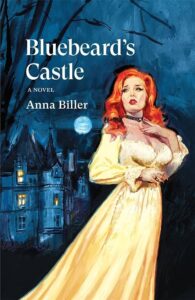
Anna Biller, Bluebeard’s Castle
(Verso, October 10)
Anna Biller’s sly feminist dissection of gothic tropes is as lush and layered as her cinema (Biller is the director of the cult classic The Love Witch). A young romance writer is seduced by a handsome ne’er-do-well who makes himself out to be a wealthy gentleman. Soon, he shows himself to be a brutal lover and more concerned with borrowing from her dwindling savings than making any money of his own. And yet, she has fallen in love with him…or so she tells herself, but Biller skillfully portrays the gaslighting and abuse that reduce her heroine to making excuses for her boorish husband.

Aden Polydoros, Wrath Becomes Her
(Inkyard, October 10)
In this gorgeously written, brutally powerful take on the Golem legend, a teenage girl is killed in the Holocaust and brought back by her father as a clay creature, seeking vengeance. Her violence is effective, but soon channeled for more than vengeance, and she must take a stand against those who would exploit her for evil.

Nat Cassidy, Nestlings
(Tor Nightfire, October 31)
A couple with a baby gains access to the perfect two-bedroom in Nat Cassidy’s ode to creepy New York legacy apartment buildings. Ana and Reid are struggling after birth leaves Ana paralyzed, and they worry about moving to a higher floor in terms of emergencies and accessibility, but the apartment is just too nice to say no to. There’s a reason they’re being welcomed into the building, however: their neighbors have sinister motivations. Of note is the novel’s take on antisemitism as horror, in the guise of a hateful former landlord echoing currently rising prejudices.
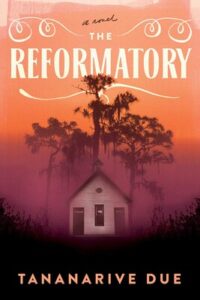
Tananarive Due, The Reformatory
(Saga, October 31)
Tananarive Due is one of the greatest living horror writers, and her new book blends her signature style with an exploration into a very personal trauma: Due’s great-uncle was one of many Black children harmed by the Florida reform school known as the Dozier School for Boys, and The Reformatory takes readers into the nightmare that was the school circa 1950. Sure to be as powerful as it is haunting.

Linda Cheng, Gorgeous Gruesome Faces
(Roaring Brook Press, November 7)
In this high-concept horror, Cheng’s narrator Sunny is a disgraced former member of a manufactured girl group that was meant for K-pop stardom—at least, until one of the members killed herself, and the other cuts off all contact with Sunny. When Sunny finds a chance to reconnect with her bandmate, and finally understand what went wrong, she leaps in without hesitation: there’s a new contest to become the next big pop idol, and she’ll stay in the program until she discovers the truth, no matter how dangerous.

